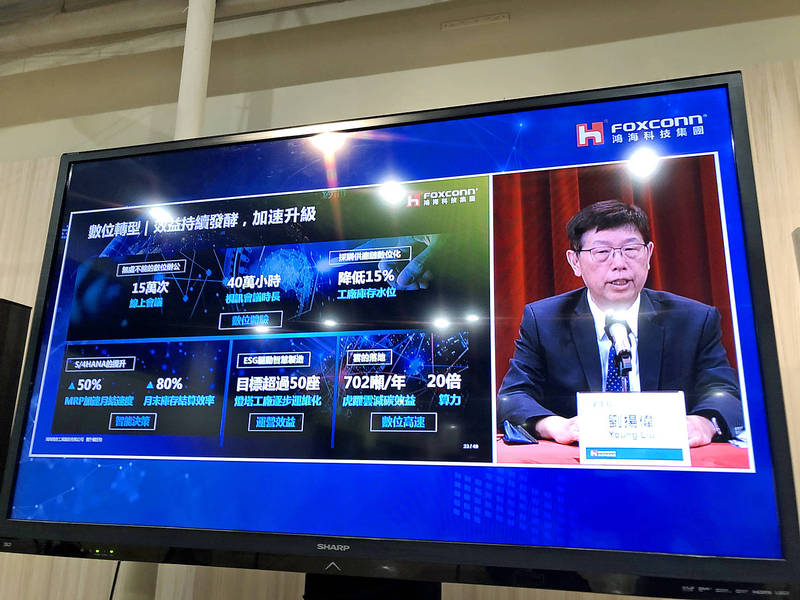《TAIPEI TIMES》 Hon Hai vetting satellite, smart car tech

A screen shows Hon Hai Precision Industry Co chairman Young Liu speaking at the company’s annual general meeting in New Taipei City’s Tucheng District on Tuesday last week. Photo: CNA
LOOK UP: The firm should tap into space travel and colonies, as such businesses are expected to drive growth in tech over the next 20 to 30 years, an expert said
By Lisa Wang / Staff reporter
Hon Hai Precision Industry Co (鴻海精密) is exploring new business opportunities in technologies related to low Earth orbit (LEO) and smart car connectivity, the company said yesterday.
Hon Hai chairman Young Liu (劉揚偉) last week said that an LEO satellite from Hon Hai might be seen in the sky next year, as the company aims to create more value and higher returns for its shareholders, while the firm told yesterday’s forum that Microelectronics Technology Inc (台揚科技), a 5G equipment and satellite component supplier that it fully owns via its subsidiaries, has tapped into the LEO satellite receiver market.
At the NExT Forum, organized by the Hon Hai Research Institute (鴻海研究院), industry experts discussed the development of 5G and 6G (B5G) technologies, as well as opportunities that lie beyond, focusing on LEO supply chains and their link to the fulfillment of autonomous vehicles.
Numerous applications rely on having full coverage of B5G, LEO and low-latency networks with high-reliability design, research institute chairman Wu Jen-ming (吳仁銘) said.
National Space Organization Director-General Wu Jong-shine (吳宗信) said that a large-scale company such as Hon Hai should tap into space travel and space colonies, adding that such businesses would drive growth over the next 20 to 30 years.
To meet growing demand for full Internet coverage, especially in rural areas, existing 5G networks can be integrated with 6G technology or LEO satellite technology, Wu said.
There are four LEO satellite projects globally: SpaceX’s Starlink, the UK and India’s Oneweb, Amazon.com Inc’s Project Kuiper and Canada’s Telesat, he said.
By the end of the year, Starlink is to take the lead with 3,400 satellites launched, he said.
Some local networking companies and precision machinery companies have joined Starlink’s supply chain, supplying ground equipment for satellites, he added.
Wu said he is upbeat about business opportunities related to LEO satellites, as there are expected to be 50,000 satellites in the sky by 2030, with 77.5 percent of them being LEO satellites.
The ground equipment segment in 2020 comprised a significant portion of the global space economy, contributing US$135.3 billion, data compiled by Bryce Space and Technology and Euroconsult showed.
The global space economy is expected to expand to US$1 trillion by 2040 from US$371 billion in 2020, Wu said.
The satellite industry accounted for 74 percent of the global space economy in 2020, he said, citing data from Bryce Space and Technology and Euroconsult.
The research institute, which was established in January last year, directs the exploration of next-generation telecommunications and semiconductor technologies. It has focused on 5G-related technologies, satellite payload technologies and the ability to deploy satellite receiving stations.
新聞來源:TAIPEI TIMES



















